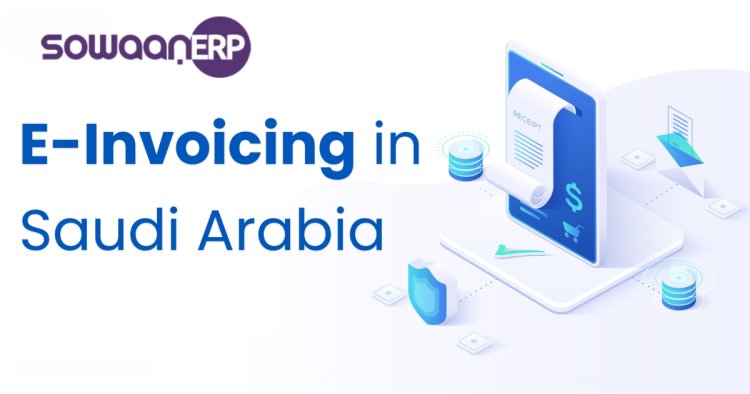What is E-Invoicing in Saudi Arabia and How Does It Work
E-invoicing in Saudi Arabia is a digital invoicing system mandated by the Zakat, Tax and Customs Authority (ZATCA) to enhance transparency, reduce tax evasion, and streamline tax collection.

E-invoicing in Saudi Arabia is a digital invoicing system mandated by the Zakat, Tax and Customs Authority (ZATCA) to enhance transparency, reduce tax evasion, and streamline tax collection. The implementation of e-invoicing, also known as FATOORA, began on December 4, 2021, requiring businesses to transition from paper invoices to electronic invoices that comply with ZATCA regulations.
Phases of E-Invoicing Implementation in KSA
E-invoicing in Saudi Arabia is being implemented in two phases:
-
Phase 1 – Generation Phase (Effective from December 4, 2021)
- Businesses must generate and store invoices electronically.
- The invoices must be structured (XML format) or human-readable (PDF/A-3 with embedded XML).
- Inclusion of mandatory fields such as VAT number, QR code (for simplified invoices), and other invoice details.
- No manual or handwritten invoices are allowed.
-
Phase 2 – Integration Phase (Effective from January 1, 2023, in stages)
- Businesses must integrate their e-invoicing systems with ZATCA’s system.
- Invoices must be validated and reported in real-time.
- Cryptographic stamps and UUID (Unique Identifier) are required.
- The system must comply with ZATCA’s security and anti-tampering measures.
Types of E-Invoices in Saudi Arabia
-
Standard Tax Invoice (for B2B transactions)
- Used when selling to other VAT-registered businesses.
- Must include buyer’s VAT number and be fully compliant with ZATCA’s format.
-
Simplified Tax Invoice (for B2C transactions)
- Used for end consumers.
- Requires a QR code for easy verification but does not need the buyer’s VAT number.
Benefits of E-Invoicing in Saudi Arabia
-
Enhanced Compliance and Transparency
- Helps prevent fraud and tax evasion by ensuring accurate reporting of transactions.
-
Efficiency and Automation
- Reduces paperwork and manual errors, leading to faster and more efficient invoice processing.
-
Faster VAT Filing and Refunds
- Since invoices are digital and reported in real-time, VAT return filing becomes easier and refunds are processed more quickly.
-
Stronger Security and Fraud Prevention
- The integration with ZATCA ensures that invoices are tamper-proof and digitally authenticated to prevent fraud.
-
Cost Reduction
- Reduces expenses associated with manual invoicing, storage, and administrative tasks.
Who is Required to Implement E-Invoicing?
- All VAT-registered businesses in Saudi Arabia.
- Third parties issuing invoices on behalf of VAT-registered businesses.
- Government entities for taxable transactions.
Challenges of E-Invoicing Implementation
-
System Integration Complexity
- Businesses need to upgrade their ERP and accounting systems to comply with ZATCA’s requirements.
-
Training and Adaptation
- Employees must be trained to use the new e-invoicing systems effectively.
-
Compliance with Security and Anti-Tampering Regulations
- Businesses must ensure their invoicing systems prevent modifications to issued invoices.
Conclusion
E-invoicing in Saudi Arabia is a significant step toward digital transformation, ensuring tax compliance and improving efficiency for businesses. While the transition requires investments in technology and training, the benefits far outweigh the challenges, making e-invoicing an essential part of Saudi Arabia’s economic modernization efforts under Vision 2030.
What's Your Reaction?

















